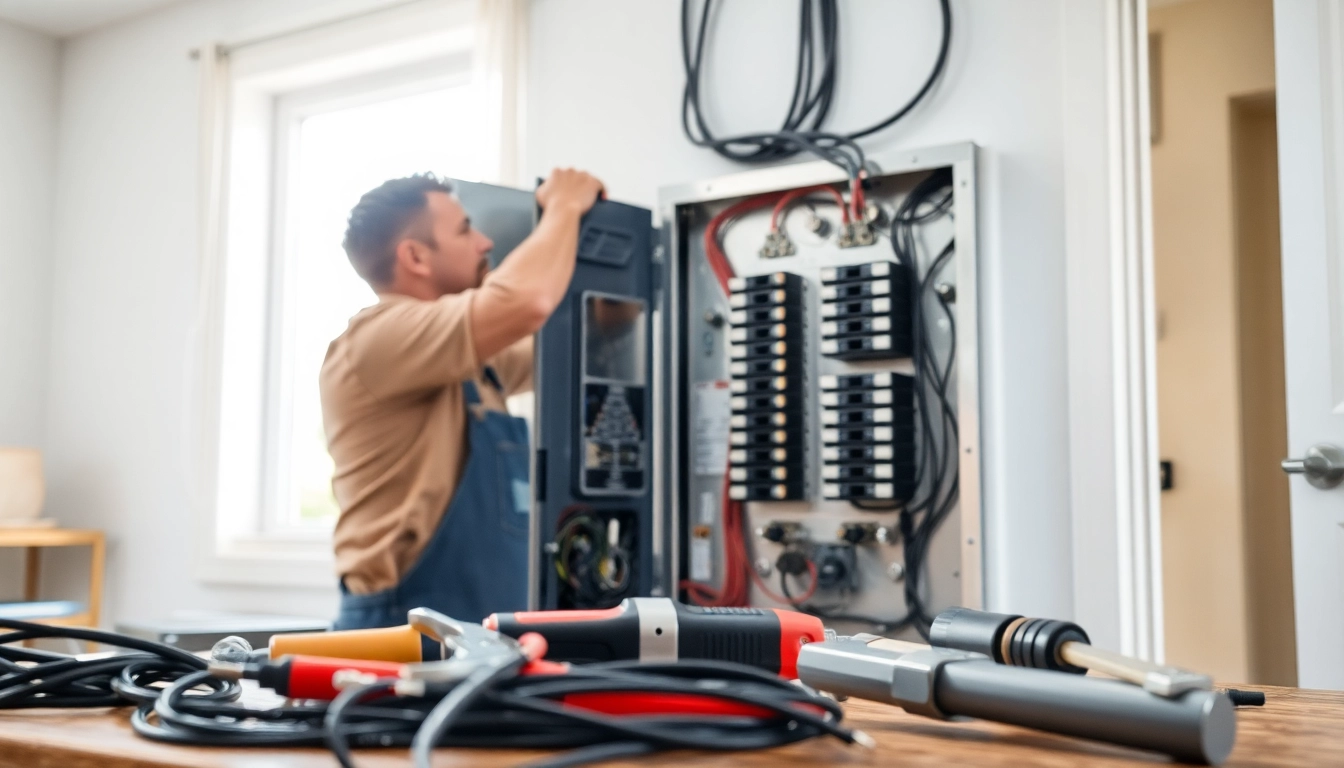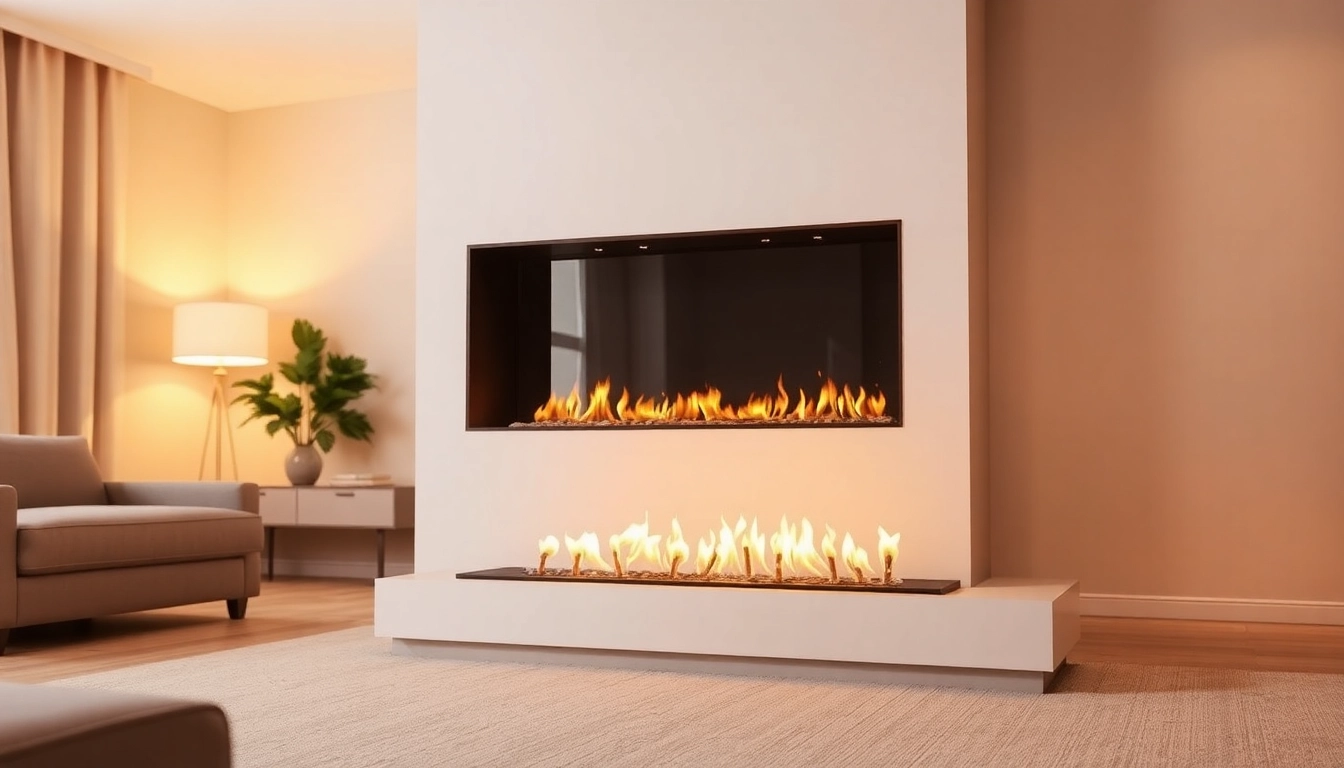Understanding the Electrical Panel
What Is an Electrical Panel?
An electrical panel, commonly referred to as a breaker box, serves as the central hub that distributes electricity throughout your home. This critical component is responsible for directing electrical power from the utility company into your residence’s circuitry. Essentially, it regulates and manages energy output to different areas and devices of your home, ensuring efficient operation of electrical systems.
Modern homes rely heavily on electronics and electrical devices, making the role of the Electrical Panel more crucial than ever. Understanding its function paves the way toward maintaining home safety and ensuring energy efficiency.
Components of an Electrical Panel
Every electrical panel consists of several integral components that work together to manage electrical distribution and safety:
- Main Breaker: The main breaker serves as the switch that controls the power supply to the entire panel. It can shut off electricity in emergencies or during repairs.
- Circuit Breakers: These are the safety devices that interrupt the flow of electricity if a circuit becomes overloaded or if a short circuit occurs. This function minimizes the risk of fire and protects devices from damage.
- Wiring Bus Bars: These conductive metal bars distribute electricity from the main breaker to individual circuit breakers, facilitating efficient power flow.
- Neutral Bus Bar: This component connects the neutral wires from each circuit to ground, ensuring safe discharge of excess electricity.
- Ground Wire Connection: Crucial for safety, this connection prevents electrical shocks by directing excess current safely to the ground.
Benefits of a Modern Electrical Panel
Upgrading to a modern electrical panel can yield numerous benefits for homeowners:
- Enhanced Safety: Newer panels provide advanced circuit protection, reducing the risk of electrical fires or shock.
- Improved Reliability: Modern panels are more reliable and can handle increased electrical loads, ensuring that power delivery is consistent.
- Energy Efficiency: Upgrading can lead to more efficient electricity use, potentially reducing utility bills over time.
- Expanded Capacity: New electrical panels offer greater capacity, accommodating additional circuits for future expansion in electrical needs.
Signs You Need to Upgrade Your Electrical Panel
Increased Electrical Demand
As households evolve with technology, the demand for electricity typically increases. Modern appliances, smart devices, and home automation systems can overload older panels. If you find your current panel insufficient for your needs, such as by frequently using extension cords or plugging multiple devices into a single outlet, it might be time to consider an upgrade.
Frequent Circuit Breaker Trips
Frequent trips of circuit breakers signal that the electrical panel is unable to handle the load effectively. This occurs when the exceeded capacity causes the breaker to shut off the current to protect wiring and devices. If you notice this happening regularly, it’s a clear indication that your electrical panel may need an upgrade.
Old and Outdated Systems
Outdated electrical panels, usually found in homes built several decades ago, may not meet today’s electrical demands or code requirements. Features or technologies that were standard decades ago may now pose safety risks and operate inefficiently.
Choosing the Right Electrical Panel
Types of Electrical Panels
When selecting an electrical panel, it’s essential to understand the different types available:
- Main Breaker Panel: This is the most common type, offering a single main breaker to control the entire house.
- Sub-Panels: Sub-panels are used to provide additional circuit space for larger homes or setups, allowing for more manageable electrical distribution.
- Smart Panels: Equipped with modern technology, smart panels provide better monitoring and control over power usage and can integrate with home automation systems.
Key Features to Consider
When choosing a new panel, consider the following features:
- Amperage Rating: Panels typically range from 100 to 400 amps, which determines how much current can be supplied. Select an amperage that meets current and future needs.
- Number of Circuits: Ensure the panel has enough spaces for circuit breakers based on your home’s requirements and any potential for future expansion.
- Safety Features: Look for panels with integral safety features, such as ground-fault circuit interrupters (GFCIs) and arc-fault circuit interrupters (AFCIs), which enhance safety significantly.
Cost Considerations for Upgrading
The cost of upgrading an electrical panel varies significantly based on several factors, including:
- Type of panel chosen (standard or smart)
- Labor costs in your region
- Permit fees and local code requirements
Investing in a quality electrical panel may seem daunting, but it is crucial for the safety and efficiency of your home. In the long run, it can prevent costly electrical damage and reduce your energy bills.
Installation Process for Your New Electrical Panel
Hiring a Qualified Electrician
Choosing a qualified electrician for the installation process is critical. Proper installation not only ensures compliance with local codes but also enhances safety. When selecting a professional, consider their licensing, experience, and reviews from previous clients.
Permitting and Code Compliance
Before installation, it is often necessary to obtain permits from local authorities. Regulations may dictate the type of panel that can be installed and how it should be configured. A qualified electrician can help navigate these requirements, ensuring that your new installation meets all necessary codes.
Step-by-Step Installation Overview
- Turn off the main power supply.
- Remove the old panel, ensuring safe handling of wires and components.
- Install the new panel according to all specified local codes.
- Connect new circuit breakers and run wiring as needed.
- Test the new panel to ensure functionality and safety.
- Obtain final inspection and approval from local electrical inspectors.
Maintenance Tips for Your Electrical Panel
Regular Inspections
Conduct regular inspections of your electrical panel to ensure components are functioning correctly. Look for signs of wear or corrosion, which may indicate potential issues.
Keeping It Clean and Accessible
Maintain a clean area around your electrical panel, ensuring no obstructions prevent access. Dust and debris can accumulate and potentially cause problems over time.
Signs of Wear and Tear to Monitor
Pay attention to any unusual noises (buzzing or popping) coming from the panel. Discoloration around the panel or heat emanating from it can indicate serious issues. Be proactive in addressing these signs to ensure safety.


